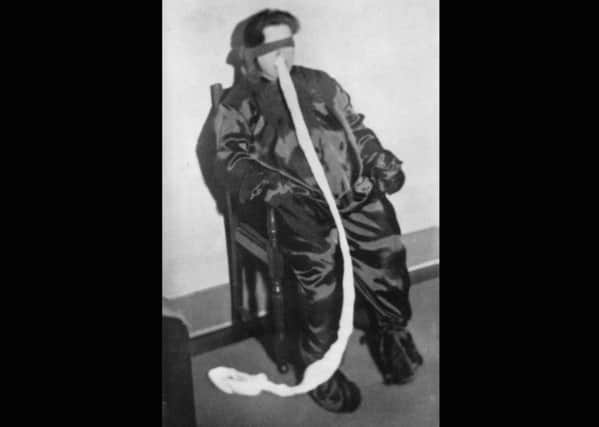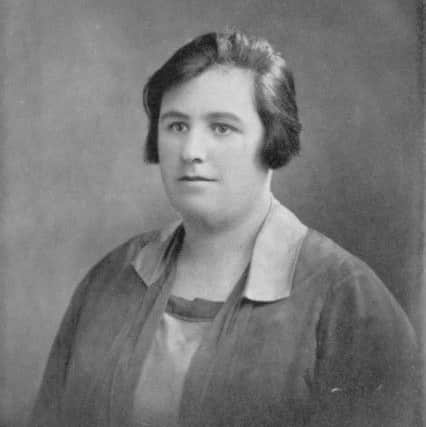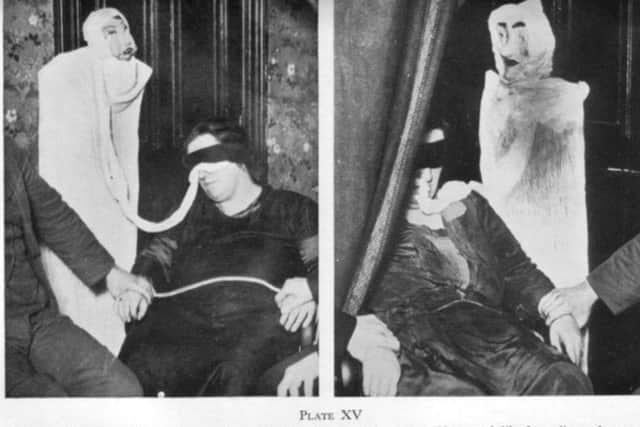Hellish Nell - the Scottish 'witch' jailed in 1944


Known as Hellish Nell from childhood given her bolshie character, Duncan’s seances became the stuff of sensation with her apparent ability to summon the dead in much demand during World War Two.
Her powers were highly regarded by some with the ghost of Sherlock Holmes’ creator Arthur Conan Doyle among those who reportedly appeared at one of Duncan’s seances in the capital, according to testimony given at the trial.


Advertisement
Hide AdAdvertisement
Hide AdHowever, Duncan was to suffer great humiliation after being exposed and derided by psychic investigators for regurgitating fake ectoplasm - made from cheesecloth or paper dipped in egg white - during meetings to indicate she had successfully summoned a spirit.
Paper mache heads were also used to depict the dead.
Incredulous, psychic researcher Harry Price later wrote: “Could anything be more infantile that a group of grown-up men wasting time, money and energy on the antics of a fat-female crook?”


Despite it all, Duncan, who was originally from Callander but moved to Dundee to work in the jute mills as a teenager, travelled the country for work.
She and her husband, Henry, who was disabled, later settled in Kirkhill Road, Edinburgh, and had six children to feed.
While the horrific losses of World War II provided Duncan with a stream of customers, her activities were to arouse suspicion among the authorities.
Officials started attending her seances after she told a meeting in Portsmouth in November 1941 of a conversation with a dead sailor, Sid, who drowned during the sinking of HMS Barham.


At that time, the sinking had not been made public by the government although letters had been sent to the families of the 861 men who died. A newspaper report had also appeared.
Advertisement
Hide AdAdvertisement
Hide AdDuncan was arrested in January 1942 following another seance at the Master Temple Psychic Centre in Portsmouth, which sat above a druggist’s shop.
Officers attempted to stop the ‘ectoplasm’ issuing from Helen’s mouth, but failed, according to accounts.
Duncan plead not guilty with three others to conspiring to contravene the 1735 Witchcraft Act and pretending to exercise conjuring.


The severity of the charges has long been criticised. Richard Denham, in his book Weird World War, notes how the “Blitz Witch” was originally to be charged with treason or espionage until the offence was upgraded.
More usually, mediums would be charged under vagrancy laws but Duncan’s case was opened at the Old Bailey in March 1944.
The defence presented 44 witnesses to speak of Duncan’s supernatural powers.
Vincent Woodcock, of Henley Avenue, Blackpool, said that his wife, who died in 1939, appeared at each of the 19 seances he had attended.
Advertisement
Hide AdAdvertisement
Hide AdWitness Alfred Dodd said he saw the living form of his first sweetheart Helen at a seance led by Duncan in Bootle in 1936.
He told the court: “She waved in exactly the same way she did when he took her home after the last social dance.
“She stood before me a living, palpitating woman, the same hair I knew so well. She was so real that instinctively I put my arms out to her, thinking she would be solid, but she started back, saying ‘don’t touch me’ and faded before my eyes. She dulled into nothing.”
An offer for Duncan to demonstrate her powers to the jury was declined.
The Recorder later claimed that, had nothing appeared, she would receive an unfair trial akin to those of the “Dark Ages.”
The prosecution claimed that Duncan had been involved in fake seances for those who had been killed in the war.
The medium had made £112 in six days - the equivalent of £3,500 - the court also heard.
Advertisement
Hide AdAdvertisement
Hide AdOn sentencing Duncan to nine months in prison, the Recorder said: “Many of those who sought solace in spiritualism were poor people and the law endeavoured to protect them against themselves.”
Duncan collapsed moaning in the dock on hearing her sentence before she was escorted to Holloway Prison, where she enjoyed a degree of popularity given the seances she held in her cell.
Winston Churchill, himself a member of the Ancient Order of Druids, described the case as “obsolete tomfoolery”.
The Witchcraft Act was repealed in the early 1950s making Duncan the last to be imprisoned under its terms.
A long-running campaign has sought to pardon Duncan from her conviction claiming that alternatives to the ancient law should have been used and that wrongful information about a previous case in Edinburgh had been put to the court.
In 2008, the Scottish Parliament rejected a petition to pardon her with The Criminal Cases Review Commission also declining to reopen the case.
A bronze bust of Helen Duncan is on show at Stirling Smith Art Gallery and Museum after some objected to placing it in her birth town of Callander.
